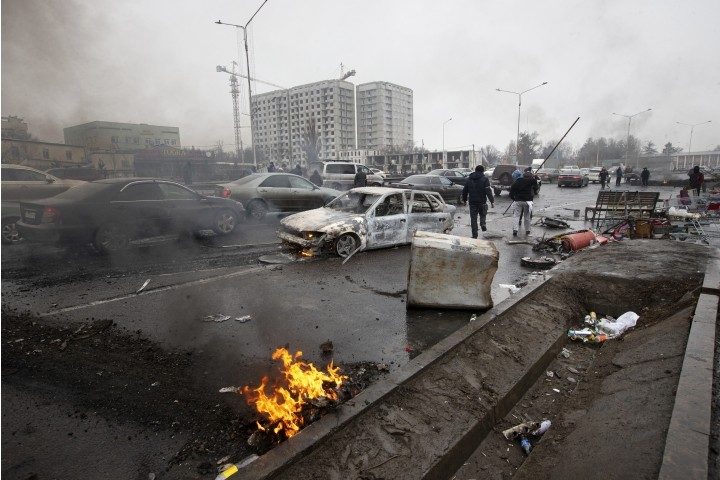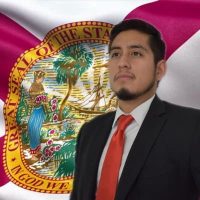
The term “color revolution” refers to uprisings, marked by mass protests and calls for “democracy,” that seek and/or succeed in replacing a country’s regime with one that is more palatable to the international community. Many believe such revolutions to be the doing of the American neocon establishment and other globalist powers. Is this the case in Kazakhstan?
Kazakh President Kassym-Jomart Tokayev took to Twitter to claim that the recent widespread street looting and violence seen in his country is not about high gas prices, as the media has claimed, but is the work of politically motivated “gangsters and terrorists.”
In an English-language Twitter thread late Friday, Tokayev said he immediately addressed the concerns of protesters as soon as demonstrations began. To quell anger over a sharp spike in liquefied petroleum gas prices, Tokayev ordered the government “to regulate the price” on January 2.
“Regretfully, the protests in several regions of Kazakhstan and Almaty led to escalation of violence. Therefore, I decided to fire the government and imposed a nationwide curfew,” the Kazakh leader said.
But the decision allegedly failed to stop the unrest, as “the protests led to further escalation of violence all over the country.” Tokayev said the violence was the result of “an armed act of aggression, well prepared and coordinated by perpetrators and terrorist groups trained outside the country.”
Tokayev went on to assert that as many as 20,000 “gangsters and terrorists” were involved. In Almaty, the country’s largest city, there were “at least six waves of attacks of terrorists.”
The rioters were “very well trained, organized and commanded by the special center,” the president alleged, claiming that some of them were apparently foreigners “speaking non-Kazakh languages.”
Tokayev said he would “neutralize” those causing the unrest. He also stated no dialogue was possible with those who won’t lay down their arms, authorizing law enforcement personnel to open fire on rioters without warning.
“They were beating and killing policemen and young soldiers, [setting] fire [to] administrative buildings, looting private premises and shops, secular citizens, raping young women,” he stated.
Reuters noted that “an Instagram live stream by a Kazakh blogger showed a fire blazing in the office of the mayor of the main city, Almaty, with apparent gunshots audible nearby. Videos posted online also showed the nearby prosecutor’s office burning.”
The unrest in Kazakhstan is one of numerous hot spots in the near east.
Russia is currently in a standoff with the United States, European Union, and other powers over Ukraine. Russian President Vladimir Putin is making maneuvers to possibly invade Ukraine unless he receives assurances that NATO won’t expand to that country. The western nations have previously promised NATO would not expand to the east in Russia’s direction; Russia says it sees current movement to expand NATO to Ukraine as a national security risk.
“NATO never promised not to admit new members,” U.S. Secretary of State Antony Blinken said Friday, firing back at Russian arguments.
Last week, the Biden White House slapped sanctions on Bosnian Serb leader Milorad Dodik for his allegedly “destabilizing corrupt activities” in the wake of his push for the Serbian portion of his country, Bosnia and Herzegovina, to become independent.
“Milorad Dodik’s destabilizing corrupt activities and attempts to dismantle the Dayton Peace Accords, motivated by his own self-interest, threaten the stability of Bosnia and Herzegovina and the entire region,” said Brian Nelson, the Treasury Department’s under secretary for terrorism and financial intelligence.
Dodik, a member of Bosnia and Herzegovina’s tripartite presidency, has been a strong advocate for the country’s Serb-Orthodox Christian region to break away from the Muslim Bozniaks and Catholic Croats. Dodik’s actions have earned him the ire of everyone from the United States to the E.U. to Turkey.
But Americans don’t have to look to the eastern hemisphere to witness a color revolution. We already experienced one in 2020 in the United States. The ongoing Black Lives Matter, Women’s March, March for Our Lives, and other “progressive” mass movements that rocked the country simultaneous to the media’s narrative of Trump as an illegitimate, Russia-owned “insurrectionist” were all a prime example of how these globalist uprisings work.
Not surprisingly, it was globalist financiers such as George Soros who funded the anti-Trump movement.
And in the end, it all had its desired effect. The color revolution tactics the Deep State practiced so many times abroad worked successfully when employed to remove a sitting president, Donald Trump, here at home.




